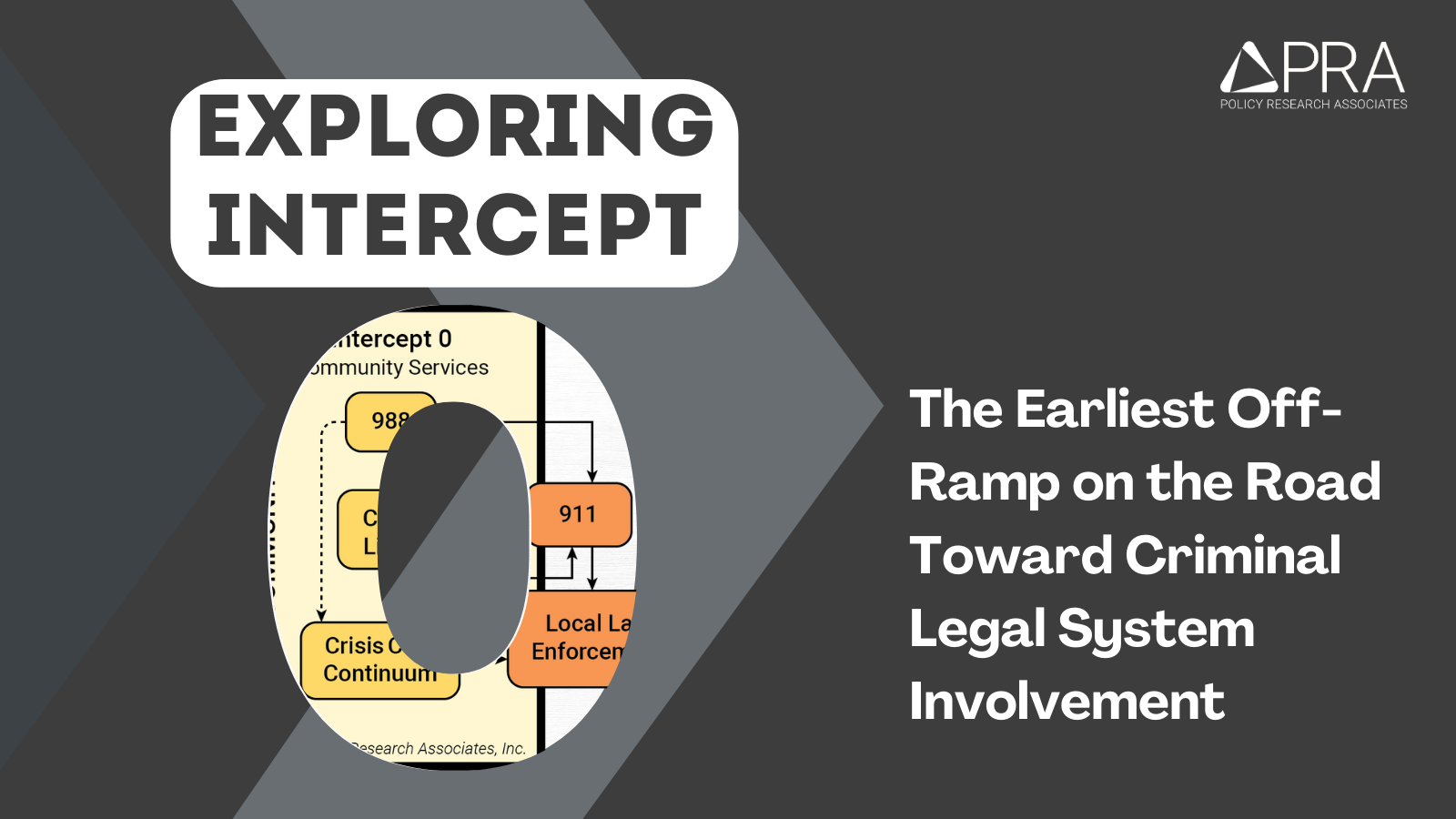Intercept 0 is the first in the six-stage Sequential Intercept Model, a framework for understanding how people interact with crisis response and criminal legal systems. Intercept 0 represents a simple but profound shift in how we identify and address the needs of people with mental health conditions and substance use disorders who are involved in or at risk of involvement in the criminal legal system.
What problem does the Sequential Intercept Model (SIM) address?
A disproportionate number of people who are arrested have mental health conditions and co-occurring substance use disorders. Becoming involved in the criminal legal system disrupts supports that can help an individual in their recovery, like employment and education, relationships with family and friends, and housing. When the person with an unaddressed behavioral health condition reenters the community following criminal legal system involvement, they often end up in jail or prison again. This cycle of system involvement poses significant costs to the individual and the community.
The SIM is a framework developed to inform community-based responses to the needs of individuals with mental and substance use disorders. The model identifies key points (or intercepts) of interaction with the crisis and criminal legal systems where interventions can be made to prevent individuals from going deeper into the criminal legal system.
What was the SIM before Intercept 0?
In the original conceptualization of the SIM, there were five intercepts, all representing some form of interaction with the criminal legal system. The purpose of the model was to examine these interaction points and consider how they could be turned into opportunities to identify people with behavioral health conditions and divert them to treatment.
Why was Intercept 0 introduced into the SIM?
As awareness of behavioral health conditions and crises has increased, communities have developed more targeted ways of responding to them. Many crisis-response models now provide opportunities to steer individuals toward treatment, services, and/or supports before they interact with the criminal legal system. Intercept 0 was introduced to capture this pivotal window for intervention and the many best practices and promising models available to communities.
What services fall under Intercept 0?
Community-based services that serve individuals experiencing a behavioral health-related crisis or incident are the key entities under Intercept 0. These include the 988 Suicide and Crisis Lifeline, other crisis lines, and service providers that comprise the crisis care continuum. Local law enforcement and 911 can also play a role in Intercept 0. For instance, if a locality has implemented a crisis response program—such as a co-responder model, in which a behavioral health specialist and a police officer will respond to a call together—911 dispatchers who identify a call as being related to a behavioral health issue will contact that alternative response team.
What’s the advantage of intervention at Intercept 0?
Every opportunity to connect a person who has behavioral health conditions with treatment is worthwhile, but early intervention offers clear benefits. When an individual can access needed treatment without becoming involved in the criminal legal system, they may avoid some of the potential collateral impacts of criminal legal system involvement, such as disruption to relationships, employment or education, housing, and more.
What are some promising practices at Intercept 0?
Promising practices at Intercept 0 involve a variety of strategies designed to provide immediate and appropriate intervention for individuals experiencing behavioral health crises.
What is the future for the SIM with Intercept 0?
With Intercept 0, the Sequential Intercept Model is poised to continue its growth as a critical tool for community planning and intervention. Its use in planning processes, such as SIM Mapping Workshops, encourages early, proactive measures to address mental health conditions and substance use disorders, potentially reducing the number of individuals entering the criminal legal system. This evolution reflects a broader shift towards preventive care and cross-system collaboration, aiming to provide better outcomes for individuals and communities alike.


